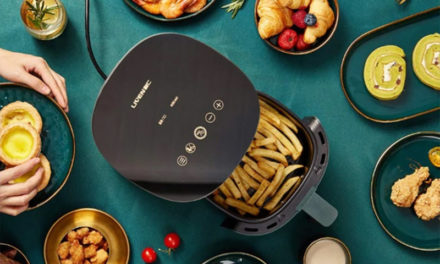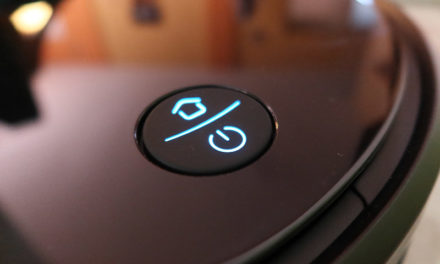
5 good reasons you may need a smart home

Have you ever wondered what it is like to live in a smart home?

This article is the first in a series on smart homes. Now we don't present specific equipment and technologies, we just look at what 5 points are, which may make it worthwhile to start building a smart house or apartment. We’ll take a little look at the situation and prospects of the smart home market, so we’ll try to pique your interest so come back later and read more articles as well.
contents show
Introductory

Nowadays, we hear a lot about artificial intelligence and the new tools that contain it. There are times when it’s a little confusing why we have certain devices, but many times it’s quite clear where the world is headed. If you’re interested in this topic - and since you’re reading this article, we suspect I’m interested - you can read a lot about self-driving cars, for example. This is typically the area where it is obvious why we need some kind of artificial, intelligent, self-learning system to work for us. However, there is another area here, and that is the market for smart houses and apartments. Do we really need to teleport our home with their smart gadgets?
The evolution of the smart home market
Today, you may not even believe it, but the moment will soon come in your life when your home will be expanded with a new digital family member. A digital assistant will also come to you, who will know when you are at home, when you need to get up to get to your work time, pay attention to the traffic, call a taxi if you need to. But this assistant will be waiting when you get home, turn on the lights while you take off your shoes in the hallway, and turn off the hallways and up the rooms if you need to, turn on the TV, select the channel you want at that time most of the time you love to watch. The oven will turn on in the kitchen, and by the time you dress up at home, your dinner will be ready. This assistant wakes you up in the morning with warm friendly light and pleasant music before you go out to the kitchen, where freshly brewed coffee is steaming. You don’t have to squint anywhere because you get used to the lights pretty slowly.

So far, it’s more like a sci-fi than a reality, but you need to know that we’re not even as far from this picture as you think. The Internet of Things, or Internet of Things (IoT), is a market expanding at an alarming rate. The name includes all our non-traditional communication devices that are connected to the Internet, be it a refrigerator, a vacuum cleaner or a burner in the apartment. And the number of these devices is about to explode.
According to Gartner, the number of connected devices will triple between 2009 and 2020. Numerically, this means that the amount of such assets will increase from 2009 million in 900 to 2020 billion by 26. And let’s face it, this crowd doesn’t include our favorite internet-connected devices, smartphones, tablets, or computers.

And IoT devices communicate with each other. They transfer data, start or stop processes without us having to intervene, thus creating a previously unknown level of automation and security of our home. You may be one of those people who feel bad that technology is pushing so deep into our lives, but you don’t have to worry. The revolution of machines, of real artificial intelligence, is still a long way off, we still have a few decades to go.
What does a smart home mean?
If you are expecting something large-scale, revolutionary now, you will be disappointed. A smart home is really just a re-labeling of the things around us that we may have encountered in their homes so far. What makes it different though? Mostly because of the price.
In the past, only the really rich could afford to live in an automated environment. Today, however, there is so much progress in many areas that these tools have become available to everyone. Wireless technologies are becoming more advanced, faster and cheaper, but the available internet bandwidth is getting cheaper. Nowadays, it is no longer necessary to build a separate wiring system in our apartment, if we want to smarten it - of course, systems that really know a lot still need a separate infrastructure - it is enough to stick a switch, camera or motion sensor on the wall.

These developments have now led larger online stores to create a separate section for shoppers looking for a smart home. What many still lack, however, is a source of information where they guide the buyer through, hold their hand, and tell them what to use. The supply is huge and we can easily run into a dead end if we choose a solution from a manufacturer who then let us down. Later, it is not at all certain that the products of the selected manufacturer will be compatible with similar solutions from other manufacturers, and it will certainly hurt if we have to replace the entire system due to an old bad decision.
5 reasons you may need a smart home
Unsurprisingly, we will be dealing with the Xiaomi ecosystem here now.
Now that we have reached the end of the introduction, we can address what the title of our article promised, that is, here are 5 areas that may make it worthwhile to cut into building a smart home!
Energy saving
A smart home can save a lot of energy thanks to the built-in sensors. To say only the most basic, the lamp will no longer light in a room where we are not inside. But there may be more complicated solutions, for example, in summer, if you ventilate, you may want to turn off the air conditioner or air purifier for this time. The window sensor detects the ability to send a signal to the central unit, which in turn turns off the device.

Cost savings
When we first subscribed to the internet a million years ago, one of the reasons for this was that we didn’t have to spend more on newspapers, everything would be up on the net. There are also items in smart homes that we wouldn’t even think of as reasons at first. Energy saving is one such obvious area that can save a lot of costs. But there are also savings opportunities we wouldn’t even think of. For example, we can save fuel by having an artificial intelligence assistant tell you at any time of the day how long a trip will take, or where to go if there is a traffic jam on your regular route. According to a survey, a smart home can save an American family up to $ 4-5 annually.

Security
We think we don’t have to be a great fortune teller to see remote monitoring systems doomed to extinction by new technologies just as some professions do. What we hear every day is that you don’t need a driver for a self-driving car, so a taxi driver, as a profession, could completely disappear in a few decades. So if we can equip our home for almost a penny with all-seeing cameras, all-sensing sensors that then monitor, alarm if there is a problem, then why pay a remote monitoring company? We always have our phone with us, we can record the images of the cameras with it, we can even send it to the police if we detect that they are in our apartment unauthorized.
Comfort
If you are somewhere, then we want to be comfortable at home. And a smart home is the foundation of comfort. No need to jump up if you turn the lights on or off, if guests come, the lamp that gives the light needed for everyday activities is transformed into a pleasant mood lighting, the shutters go down if the sun is very hot in summer, the air conditioning starts if it's too humid becomes the air in the apartment. All this, of course, automatically, we do not have to pay attention to the humidity, the right temperature, the lights are lit with the right intensity and color. You’ve already read in the introduction what we think about comfort, and believe me, it’s really good to wake up to the smell of freshly brewed coffee tickling our noses.

Health surveillance
Years ago, when cell phones began to spread, we came across useful tools through which our elderly, possibly alone, relatives could easily call for help. Nowadays, with plenty of cheap and easy-to-install remote monitoring tools, we can even look at our elderly parents, even if we live in another country out of compulsion. At the moment, we can’t find one among Xiaomi’s devices that sends an alert in the event of a health emergency, but we’d be surprised if there wasn’t one like this in the company’s offering soon. Last year, a wide range of smart devices for health care were introduced, such as a blood pressure monitor with a mobile app, a smart scale and a thousand other devices, and from here it is just a step to set these devices to send alerts above a certain limit.

So this article was just a little entertaining for you to see what can be good for a smart home. As we wrote above, and of course it follows from the topic of the blog, we will be dealing with simple and cheap hardware related to Xiaomi, that is, in summary, the Xiaomi ecosystem will be the subject of our articles. These are partly tools that a professional smart home builder would just wave at, but that’s not a problem. The goal will be for everyone, even without serious knowledge or experience, to be able to build a comfortable smart home without having to carve out an apartment and pay millions to professionals.

The series of articles will follow the following topics - at least for now, we think:
- Introduction (read this)
- Technologies, operating principle
- Xiaomi's smartphone app, Mi Home
- Smartening the basics, that is, the lighting
- Switches
- Transition between smart devices and our current devices
- Xiaomi devices that can be built into the system
Although we didn’t plan for this series, you can already read articles from us about tools that will become part of the smart home you are building.















